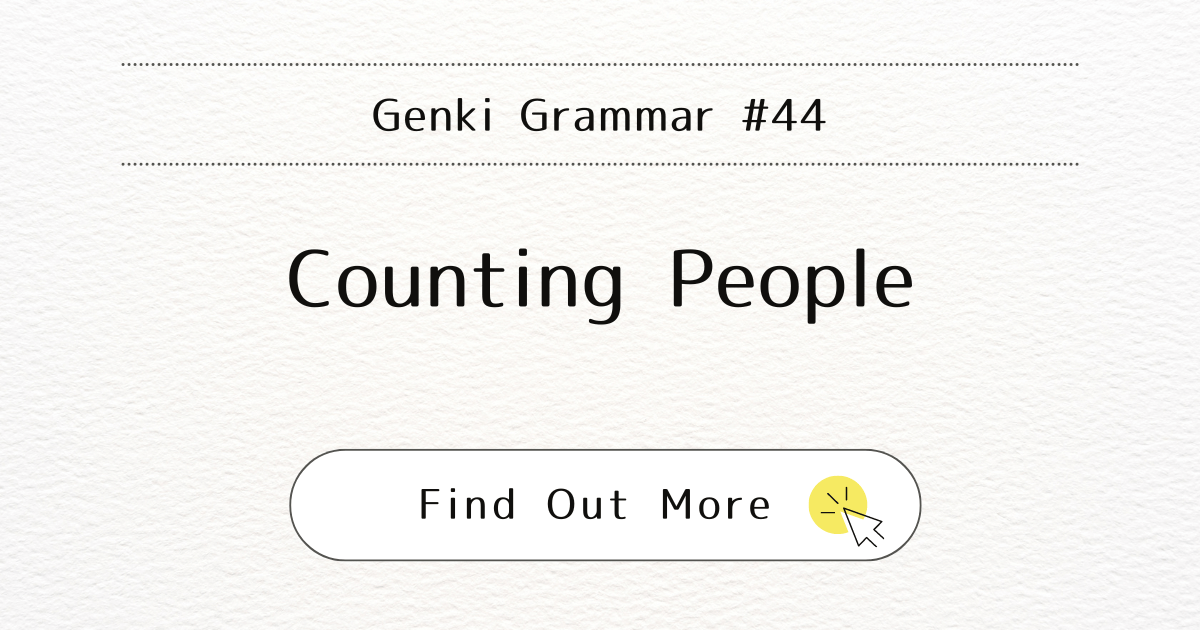
Introduction
In this post, we will learn how to count people in Japanese using simple and clear explanations.
What It Means
The counter for people in Japanese is 人 (nin), but the words for “one person” and “two people” are irregular. Here’s how to count from one to ten people:
- ひとり (一人) – hitori
- ふたり (二人) – futari
- さんにん (三人) – sannin
- よにん (四人) – yonin
- ごにん (五人) – gonin
- ろくにん (六人) – rokunin
- しちにん / ななにん (七人) – shichinin / nananin
- はちにん (八人) – hachinin
- きゅうにん (九人) – kyuunin
- じゅうにん (十人) – juunin
Note that “four people” cannot be pronounced as よんにん (yonin), even though the number four is よん (yon). It is pronounced よにん (yonin).
When You Use It
Use these counters when you want to count the number of people. For example, to count the number of students in your class, you add -人 (nin) after the noun and the particle が (ga).
| がくせい | が | – | 人 | います |
| noun | particle | number | counter | verb |
Examples
私のクラスに(は)インド人の学生が一人います。(Watashi no kurasu ni Indo-jin no gakusei ga hitori imasu.) – There is one Indian student in my class.
教室に(は)学生が五人います。(Kyoushitsu ni wa gakusei ga gonin imasu.) – There are five students in the classroom.
Note
In sentences like the examples above, the place expressions are often followed by には (ni wa) instead of just に (ni).
Conclusion
Counting people in Japanese may seem tricky at first due to the irregular words for “one person” and “two people,” but with practice, it becomes easy.



